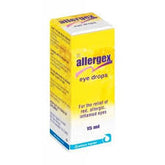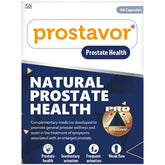Epidermolysis bullosa
Epidermolysis Bullosa (EB) is a group of rare genetic disorders characterized by fragile skin that blisters easily in response to minor injury, friction, or, in severe cases, spontaneously. This article provides an in-depth look at the causes, symptoms, diagnosis, treatment, and management of this complex and debilitating condition.
Definition
Epidermolysis Bullosa (EB) refers to a spectrum of inherited connective tissue disorders that cause blisters in the skin and mucous membranes. The severity of EB varies widely among individuals, from mild cases with minimal symptoms to severe forms that can be life-threatening.
Causes
The primary cause of EB is genetic mutations affecting proteins crucial for skin integrity:
-
Genetic Mutations:
- EB is caused by mutations in genes responsible for the production of keratin, collagen, and other proteins that help bind the skin layers together.
-
Types of EB Based on Genetic Mutations:
- Epidermolysis Bullosa Simplex (EBS): Caused by mutations in the keratin genes (KRT5 or KRT14).
- Junctional Epidermolysis Bullosa (JEB): Caused by mutations in genes encoding proteins like laminin-332 or collagen XVII.
- Dystrophic Epidermolysis Bullosa (DEB): Caused by mutations in the COL7A1 gene, which encodes type VII collagen.
- Kindler Syndrome: Caused by mutations in the FERMT1 gene affecting protein involved in skin adhesion.
Symptoms
Symptoms of EB vary based on the type and severity:
-
Blistering:
- Blisters may form on the skin, inside the mouth, and in other mucous membranes.
-
Skin Fragility:
- Skin is fragile and can tear easily with minor trauma.
-
Scarring and Deformities:
- Severe blistering can lead to scarring, deformities, and fusion of fingers and toes (syndactyly).
-
Nail Abnormalities:
- Nails may be thickened, absent, or deformed.
-
Mucosal Involvement:
- Blisters can occur in the mouth, esophagus, and other mucosal surfaces, leading to difficulty eating and swallowing.
-
Chronic Wounds and Infections:
- Persistent open wounds increase the risk of infections.
Diagnosis
Diagnosing EB involves a combination of clinical evaluation and laboratory tests:
-
Clinical Examination:
- Detailed physical examination to assess the extent and pattern of blistering.
-
Skin Biopsy:
- A sample of blistered skin is examined under a microscope to determine the specific layer of skin involved.
-
Genetic Testing:
- Identifying mutations in the genes known to cause EB.
-
Immunofluorescence Mapping:
- Uses specific antibodies to identify proteins in the skin and pinpoint where the defect lies.
Treatment
While there is no cure for EB, treatment focuses on managing symptoms and preventing complications:
-
Wound Care:
- Gentle handling and protection of the skin.
- Use of non-adhesive bandages and specialized dressings to protect blisters and wounds.
-
Pain Management:
- Pain relief medications to manage chronic pain associated with blistering.
-
Infection Prevention:
- Regular cleaning and appropriate use of antibiotics to prevent and treat infections.
-
Nutritional Support:
- Special diets and feeding techniques to ensure adequate nutrition, especially if there is mucosal involvement.
-
Surgery:
- In severe cases, surgical interventions may be necessary to manage complications such as esophageal strictures or syndactyly.
Complications
Complications of EB can be severe and include:
-
Chronic Pain:
- Persistent pain from blistering and wounds.
-
Infections:
- Frequent infections due to open wounds.
-
Malnutrition:
- Difficulty eating and swallowing can lead to malnutrition.
-
Anemia:
- Chronic blood loss from blisters can cause anemia.
-
Squamous Cell Carcinoma:
- Increased risk of skin cancer, particularly in patients with recessive dystrophic EB.
-
Psychosocial Impact:
- Emotional and psychological challenges due to the chronic and visible nature of the disease.
Prevention and Management
There are no specific ways to prevent EB, but management focuses on minimizing trauma and improving quality of life:
-
Skin Protection:
- Avoiding friction and trauma to the skin.
- Using padded clothing and soft materials to minimize injury.
-
Regular Monitoring:
- Routine check-ups with healthcare providers specializing in EB.
-
Supportive Care:
- Psychological support and counseling for patients and families.
When to See a Doctor
Seek medical attention if experiencing:
- Unexplained blistering of the skin or mucous membranes.
- Persistent or recurrent infections.
- Difficulty eating or swallowing.
- Signs of infection such as redness, swelling, or fever.
Coping and Support
Living with EB requires a supportive environment:
-
Family and Caregiver Support:
- Providing emotional and practical support to manage daily care routines.
-
Support Groups:
- Joining support groups for patients and families dealing with EB.
-
Educational Resources:
- Accessing educational materials and resources to better understand and manage the condition.
Conclusion
Epidermolysis Bullosa (EB) is a challenging and painful condition that requires comprehensive care and support. Early diagnosis, proper management, and supportive care can significantly improve the quality of life for individuals with EB.
In summary, while there is no cure for EB, ongoing research and improved management strategies offer hope for better outcomes. Awareness, education, and support are crucial for those affected by this debilitating condition.
- Complication of Epidermolysis bullosa
- Diagnosis of Epidermolysis bullosa
- Epidermolysis bullosa
- Epidermolysis bullosa myths
- How is Epidermolysis bullosa treated?
- Medicine for Epidermolysis bullosa
- Remedies for Epidermolysis bullosa
- Support for Epidermolysis bullosa
- Symptoms associated with Epidermolysis bullosa
- The best British Online Pharmacy
- Top 10 UK Pharmacies
- Treatment for Epidermolysis bullosa
- What causes Epidermolysis bullosa
- What is Epidermolysis bullosa
- Where can I buy medicine for Epidermolysis bullosa in the UK
- ZimSeller Pharmacy



















